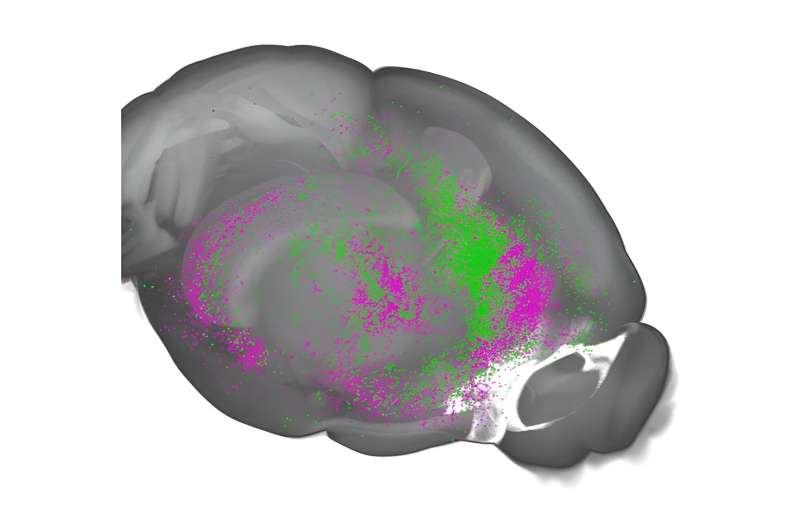This article has been reviewed according to Science X's editorial process and policies. Editors have highlighted the following attributes while ensuring the content's credibility:
fact-checked
trusted source
proofread
Researchers identify brain hub with key role in learned response to direct and indirect threats

Scientists have identified an area within the brain's frontal cortex that may coordinate an animal's response to potentially traumatic situations. Understanding where and how neural circuits involving the frontal cortex regulate such functions, and how such circuits could malfunction, may provide insight about their role in trauma-related and stress-related psychiatric disorders in people. The study, led by scientists at the National Institute on Alcohol Abuse and Alcoholism (NIAAA), a part of the National Institutes of Health, was published in Nature.
"Experiencing traumatic events is often at the root of trauma-related and stress-related psychiatric conditions, including alcohol use disorder (AUD)," said the study's senior author, Andrew Holmes, Ph.D., senior investigator in NIAAA's Laboratory of Behavioral and Genomic Neuroscience. "Additionally, witnessing others experience traumatic events can also contribute to these disorders."
In animal models of stress and trauma, learning about potential sources of threat by observing how others deal with danger can be an effective way to avoid harm. Understanding the differences in how the brain processes direct experience of a threat compared to observing another's response to a threat may shed light on factors that predispose humans to trauma- and stress-related psychiatric disorders.
Scientists examined brain activity in mice undergoing observational fear learning, the process through which animals learn about sources of danger and minimize their own risk by observing how others respond to threats. Researchers focused on the dorsomedial prefrontal cortex (dmPFC), a brain area known to play key roles in processing social information and interpreting threats in mice, humans, and other animals.
The researchers measured activity of neural pathways leading to and away from the dmPFC in mice that watched other mice learn to associate a sound cue with a mild foot shock. Animals that receive this cue-shock pairing typically learn to "freeze" or become motionless when they hear the sound cue.
The scientists then presented the observer mice with the sound cue-foot shock pairing and measured activity in the same dmPFC neural pathways. They found that when observer mice faced the "threat" of the sound cue, they showed a coordinated recruitment and calibration of pathways that either mobilize or suppress the freezing response.
"It remains unclear whether there are brain mechanisms that distinguish witnessing another's response to threat from experiencing that threat directly," says Dr. Holmes. "However, our study found that dmPFC pathways are needed for mice to learn about threats through observation, and that patterns of activity exhibited by dmPFC neurons during observed threat experience are distinct from patterns exhibited during direct threat experience."
The researchers suspect that a critical function of the dmPFC in the observer mice may be to balance the need to minimize harm (i.e., freezing) with the need to fulfill other essential survival functions (e.g., assessing risk or comforting others). They also say that the findings suggest that maladaptive responses to socially learned threats could arise in part from deficits in dmPFC pathways and may point to a potential role of dmPFC deficits in trauma- and stress-related psychiatric disorders in humans.
"This study underscores the importance of basic neurobehavioral research in defining the neurocircuits that contribute to elements of post-traumatic stress, a key driver of psychiatric disorders and alcohol use disorder in particular," said NIAAA Director Dr. George F. Koob. "By identifying patterns of brain activity that underpin how animals learn about threats from others, these findings could eventually inform prevention and treatment approaches for AUD and other stress/trauma-related disorders."
More information: Shana E. Silverstein et al, A distinct cortical code for socially learned threat, Nature (2024). DOI: 10.1038/s41586-023-07008-1



















